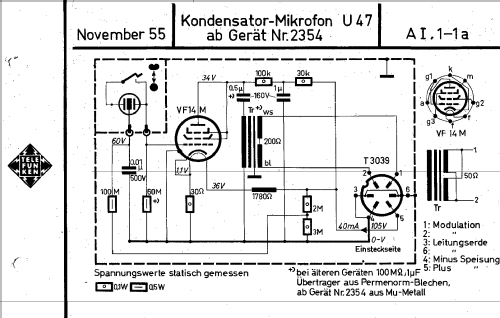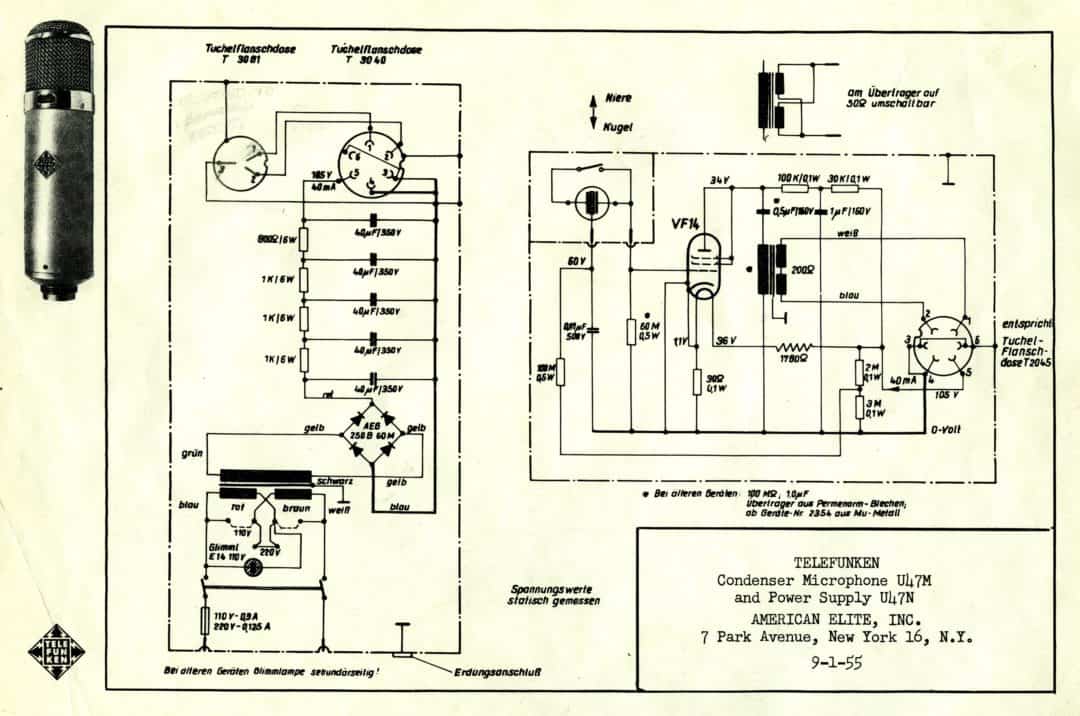MagnetoSound
Well-known member
The 5Meg resistor is part of the roll off. It’s also written in the manual. If you want flat response down to 20Hz you have to unsolder that resistor else it’s -3dB at 40Hz.
But it wasn’t there in the very first version of the M49. But I would say the majority of M49’s were delivered with it.
You are right, I see it now. Given the high value of feedback resistor R3, C3 and R4 form a low impedance path to ground, with a rising impedance below ~80Hz. This attenuates much of the feedback above this frequency but allows feedback at LF into the capsule path.
If you want to compare this with the U47 rolloff, you only have to lift R3 and reduce R5 to 60M, which is easy enough to do.






































